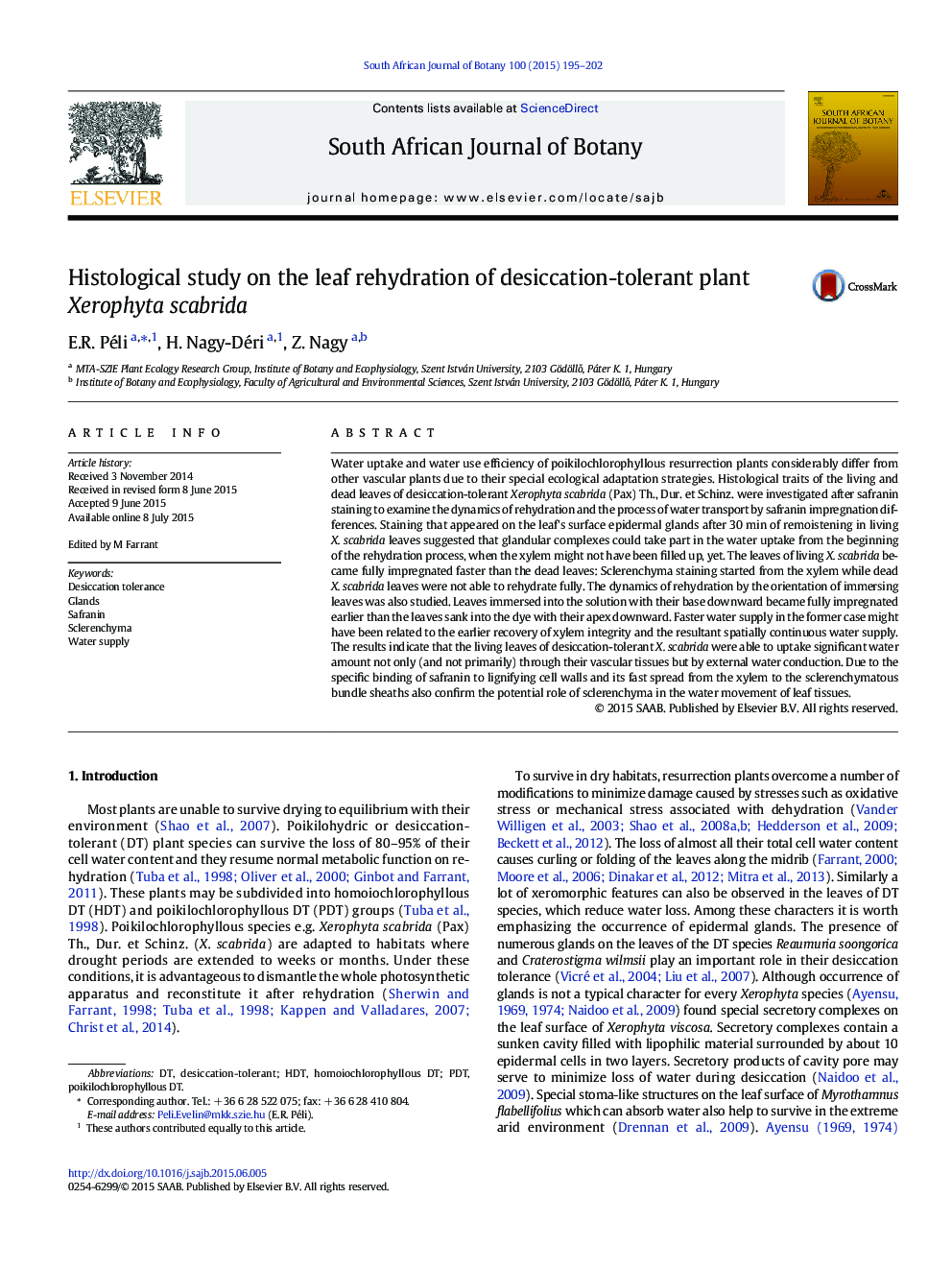| کد مقاله | کد نشریه | سال انتشار | مقاله انگلیسی | نسخه تمام متن |
|---|---|---|---|---|
| 4520391 | 1625158 | 2015 | 8 صفحه PDF | دانلود رایگان |

• Research on special morphological and histological characters of Xerophyta scabrida leaves.
• Water uptake is significant not only through the xylem but also by external water conduction.
• Extraxylar water transport is particularly important in ecological adaptation to extreme habitat.
• Glandular complexes play a crucial role in the rehydration processes of X. scabrida leaves.
Water uptake and water use efficiency of poikilochlorophyllous resurrection plants considerably differ from other vascular plants due to their special ecological adaptation strategies. Histological traits of the living and dead leaves of desiccation-tolerant Xerophyta scabrida (Pax) Th., Dur. et Schinz. were investigated after safranin staining to examine the dynamics of rehydration and the process of water transport by safranin impregnation differences. Staining that appeared on the leaf's surface epidermal glands after 30 min of remoistening in living X. scabrida leaves suggested that glandular complexes could take part in the water uptake from the beginning of the rehydration process, when the xylem might not have been filled up, yet. The leaves of living X. scabrida became fully impregnated faster than the dead leaves: Sclerenchyma staining started from the xylem while dead X. scabrida leaves were not able to rehydrate fully. The dynamics of rehydration by the orientation of immersing leaves was also studied. Leaves immersed into the solution with their base downward became fully impregnated earlier than the leaves sank into the dye with their apex downward. Faster water supply in the former case might have been related to the earlier recovery of xylem integrity and the resultant spatially continuous water supply. The results indicate that the living leaves of desiccation-tolerant X. scabrida were able to uptake significant water amount not only (and not primarily) through their vascular tissues but by external water conduction. Due to the specific binding of safranin to lignifying cell walls and its fast spread from the xylem to the sclerenchymatous bundle sheaths also confirm the potential role of sclerenchyma in the water movement of leaf tissues.
Journal: South African Journal of Botany - Volume 100, September 2015, Pages 195–202